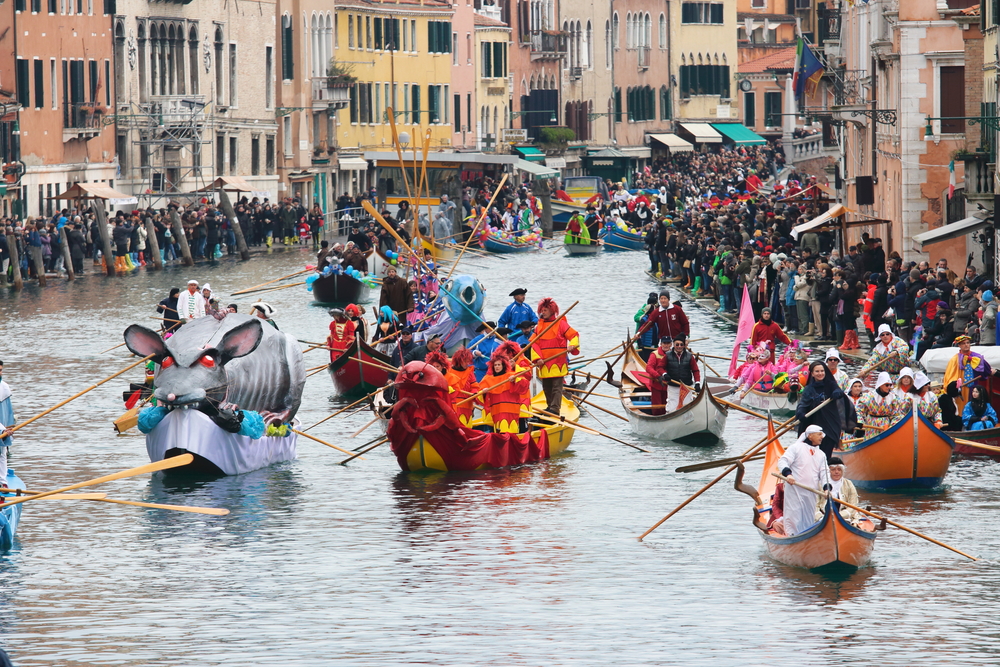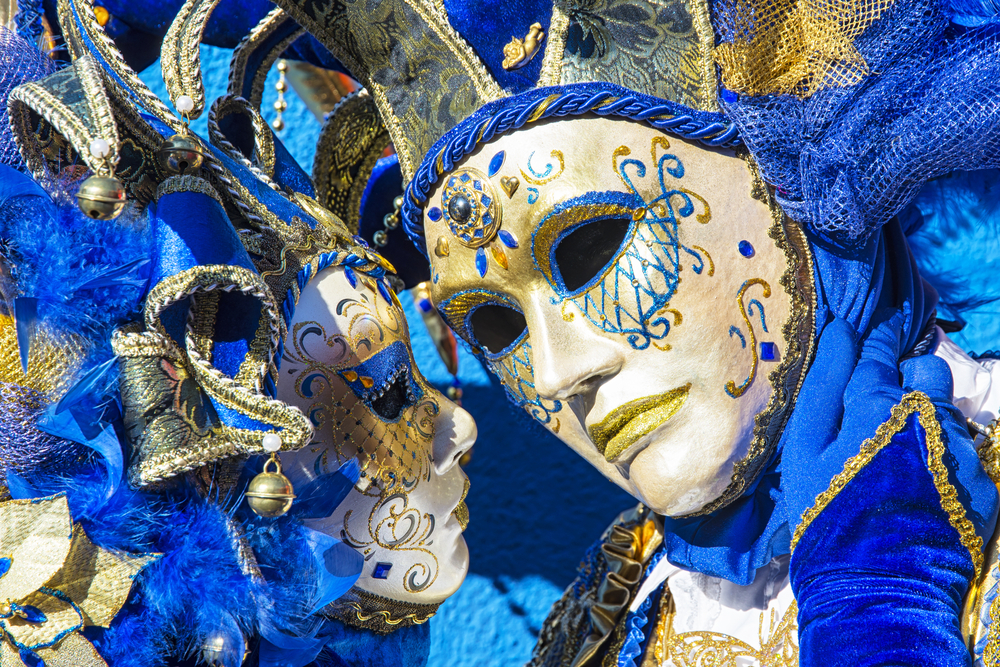In the weeks leading up to Ash Wednesday, Venetians don their distinctive masks and celebrate like no other city on earth. During the city’s centuries-old celebration, Carnival, visitors will be treated to the finest earthly pleasures, including succulent food, exquisite music, and perhaps the promise of a romantic escapade…or two! It’s the masks, however, that give Venice’s Carnival its distinctive allure. You never know who’s hiding behind one of these elegant, hand-made Venetian masks. Is it a peasant, a prince, or a priest? Not knowing is all a part of the thrill. Today, the Venetian Carnival is as popular as it ever was and attracts thousands of curious tourists every year.

History Behind Venice’s Carnival Season
It’s difficult to pinpoint the first year of the Venice Carnival, but some historians believe this festival traces its roots to the city’s 1162 victory over the nearby army at Aquileia. The Venetian Carnival, however, has never been just about celebrating a military victory. Indeed, one of the main reasons for the Carnival was to temporarily erase Venice’s social castes. For many years, Venice had the strictest rules governing how people of different classes should look and act. During Carnival, however, paupers could be princes, and worldly delights like gambling and prostitution were openly tolerated. The Carnival reached its peak in the 18th century, an era immortalized in the autobiography of Giacomo Casanova. However, the good times ended, in the 19th century when Carnival was banned. Interestingly, the Venetian Carnival was only recently revived in the 1970s to highlight traditional Italian culture.

Mysterious Masks: The Allure Of Venice’s Carnival Season
Everything in the Venetian Carnival revolves around the mask. Indeed, one of the major events at Venice’s Carnival today is a mask beauty contest. Most of the unique aspects of Venice’s Carnival take advantage of the mask’s unique powers. For instance, Venice hosts numerous masquerade balls and most street actors use masks to personify different roles in their performances. For instance, the tradition of Italian Commedia Dell’arte, which is a form of improvised street theater, relies heavily on masked characters.

Types of Venetian masks
Today, there are a bewildering variety of masks to be found in the Floating City, but the traditional masks always stand out. One of the most distinctive masks is known as the Plague Doctor’s Mask (Italian: Medico Della Peste). Anyone can easily spot these masks owing to their long beaks. As the name suggests, these masks were initially designed to be worn by doctors who treated patients stricken by the plague. It was believed this long beak would protect doctors from the spread of disease. Ordinary Venetians started wearing the Plague Doctor’s Mask to not-so-subtly remind merry-makers of their mortality. The most traditional Venetian mask, however, is the Bauta mask, which covers the wearer’s entire face. Although many Bauta masks nowadays have elaborate patterns, the original masks were entirely white. Unlike the Medico Della Peste, the Bauta’s main purpose has always been to preserve the wearer’s identity. Indeed, most of these masks have prominent chins so wearers could easily eat and drink without fear of revealing their faces.
There’s no better time of year to experience Venice’s colorful culture than during Carnival. Not only will you get to see elaborate costumes and celebrations, you’ll get to take part in the revelry. Don’t worry about standing out as a tourist; during Carnival season, nobody can tell the difference! As you glide along Venice’s canals, you’ll soon appreciate the intoxicating power of the mask.
Venice Private Tour with St. Mark’s and Gondola Ride
Every day at 9am, 11am & 3pm 2.5 hours


